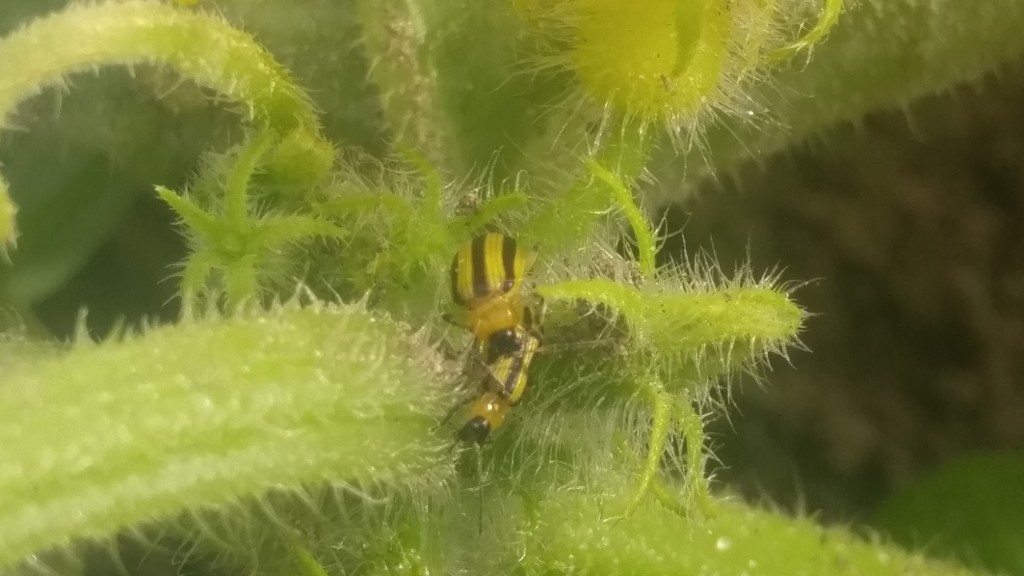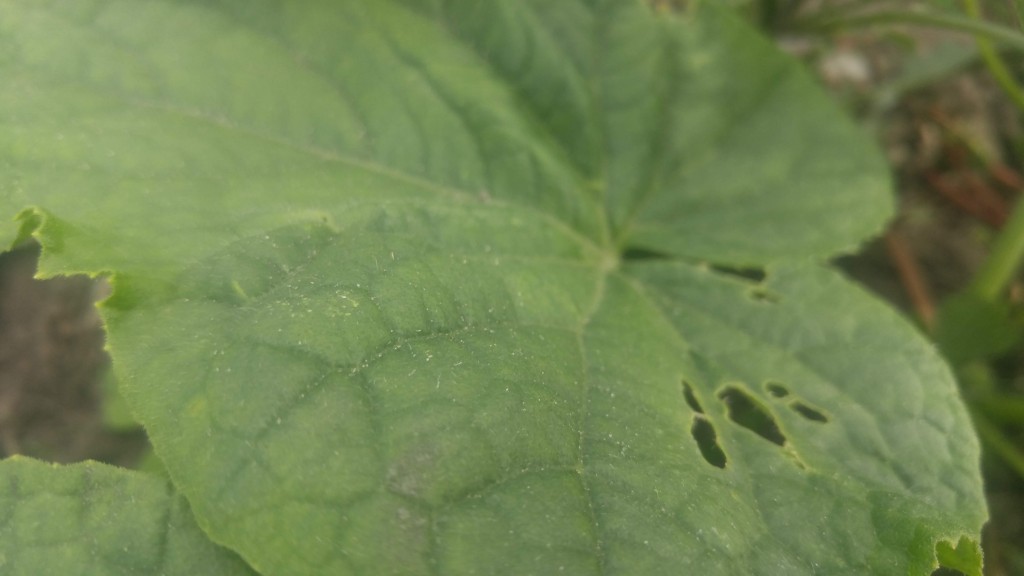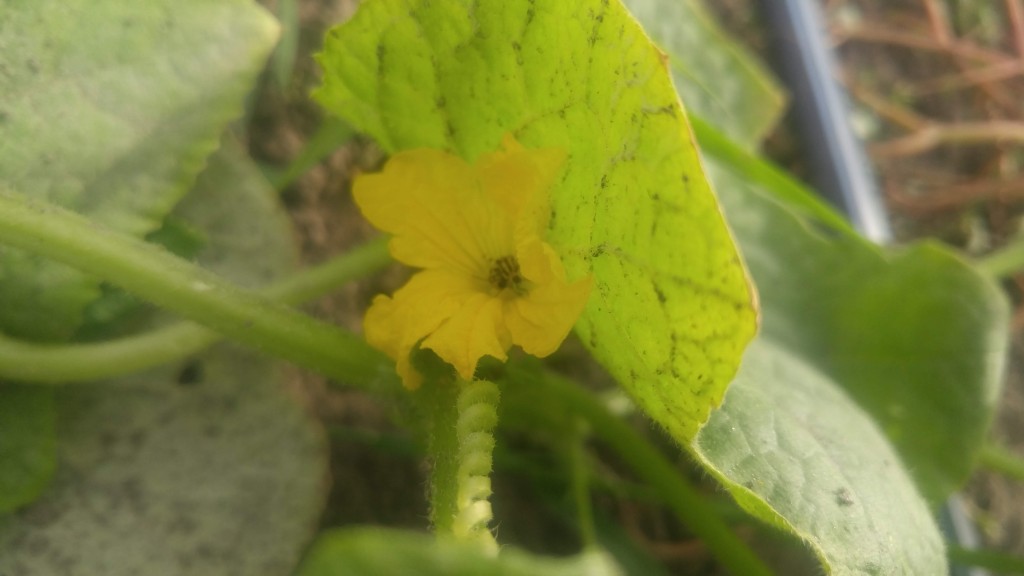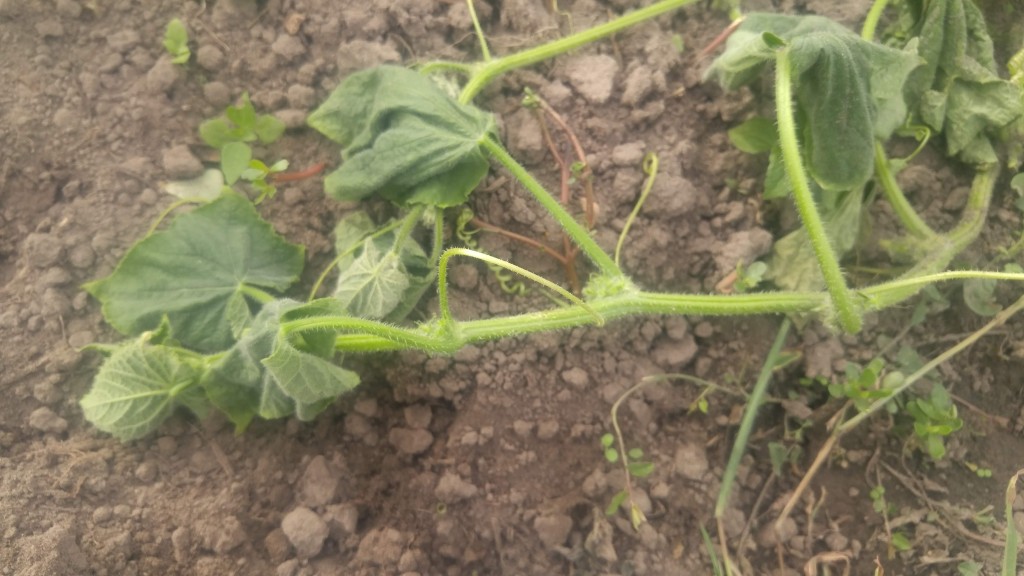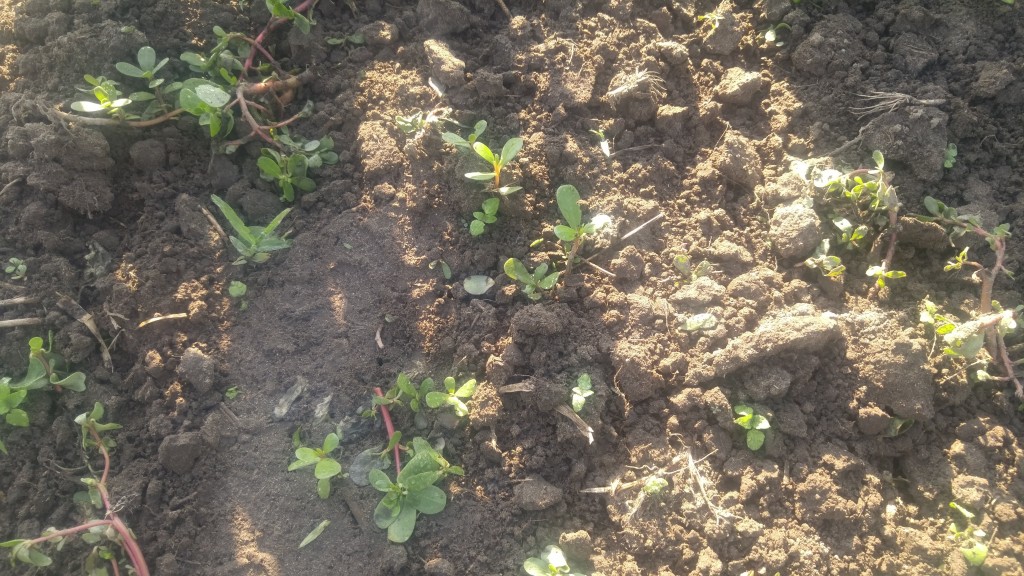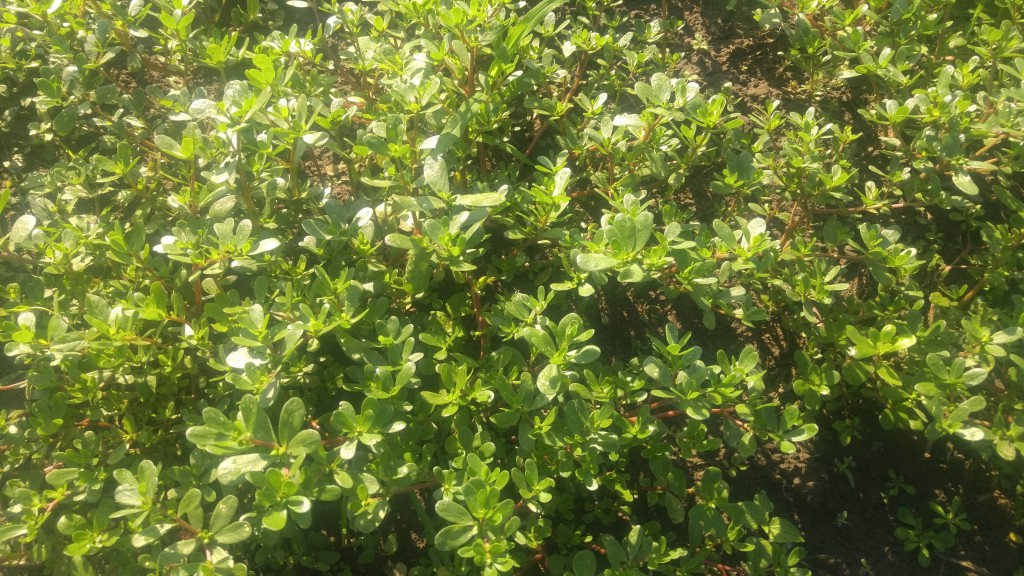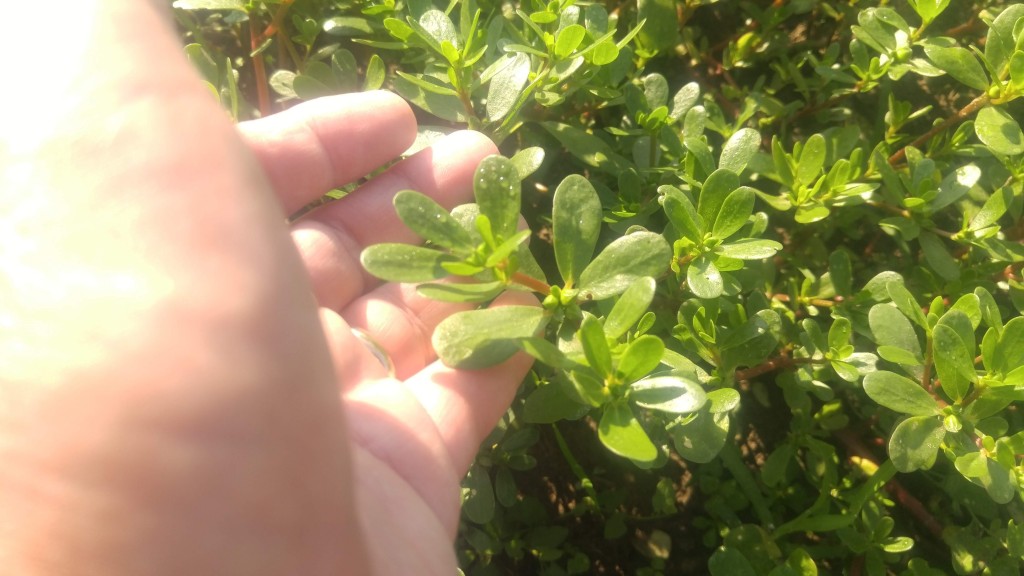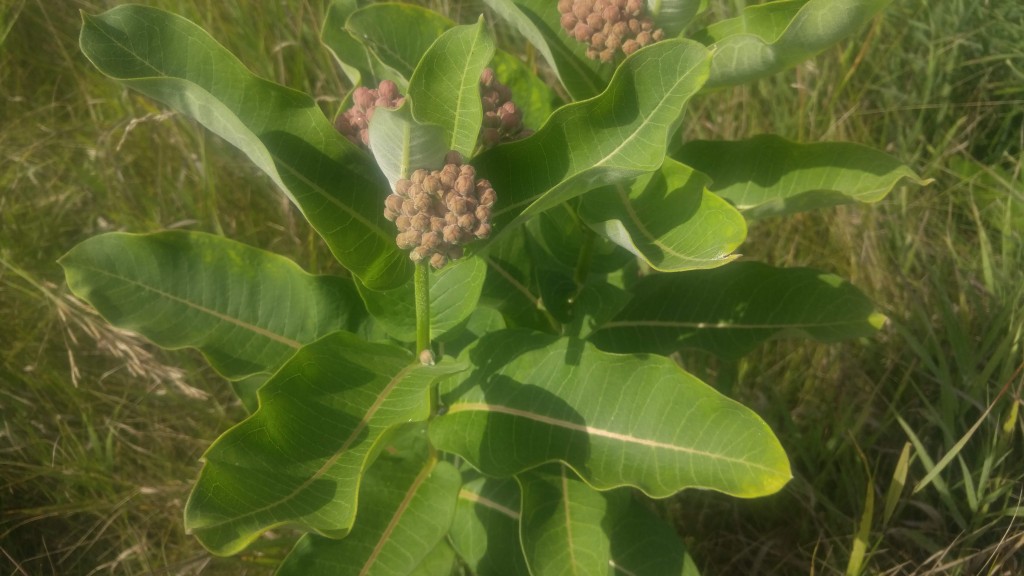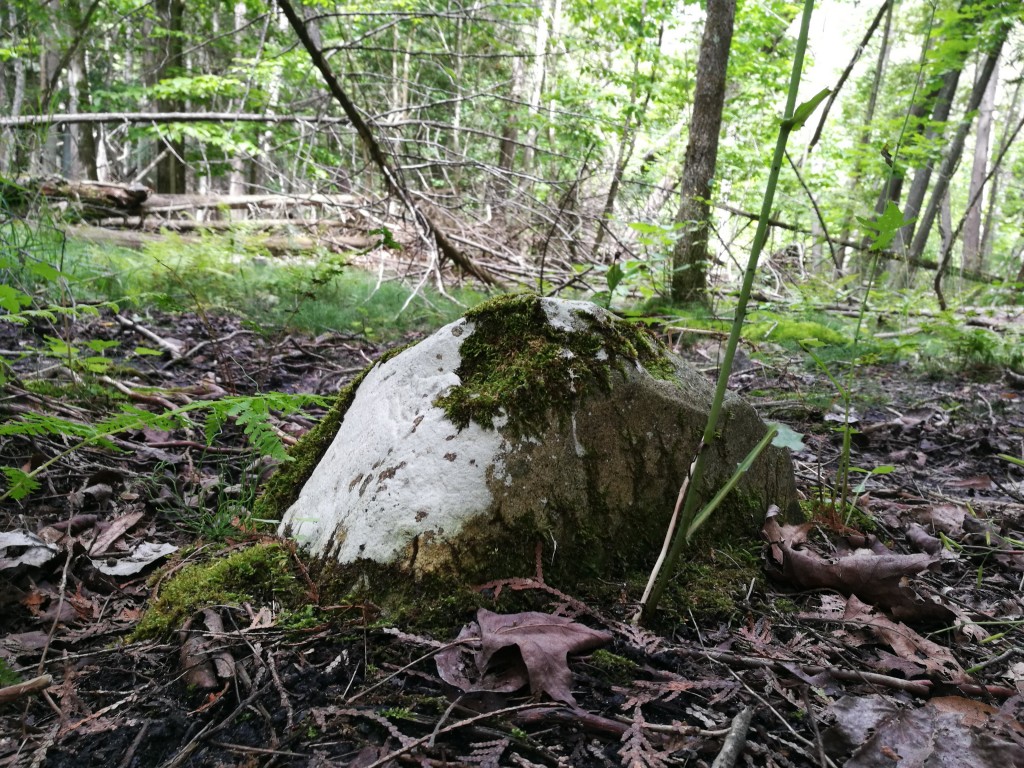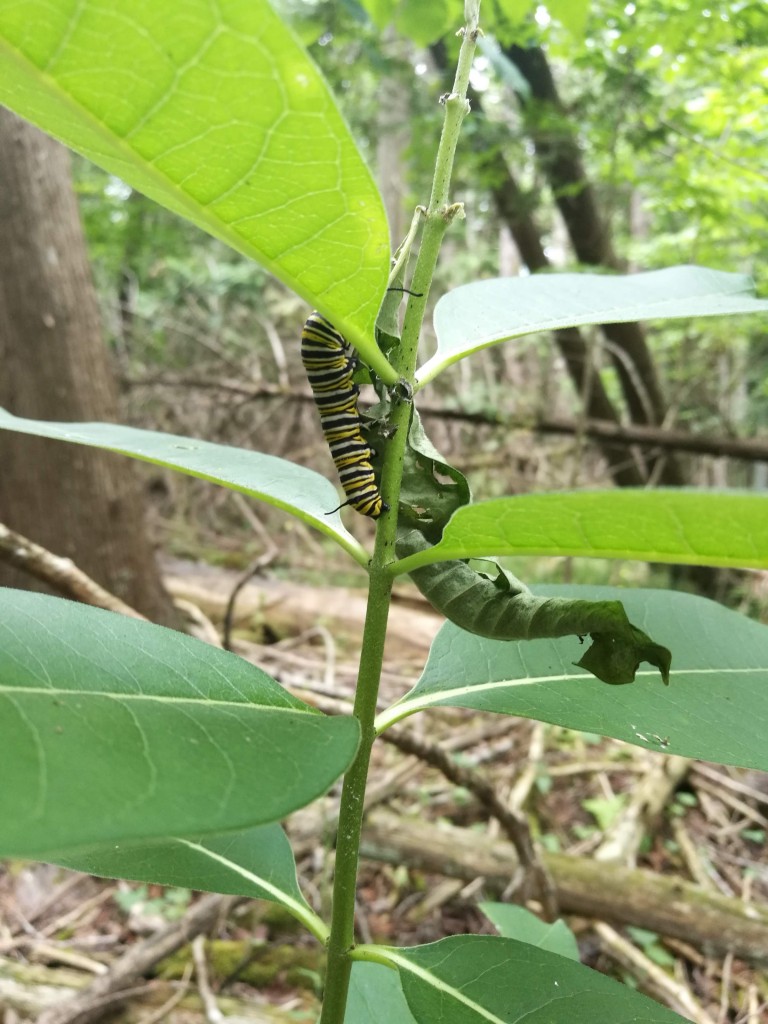The first striped cucumber beetles of the season have finally showed up in my garden. These bright and happily colored pests cause a lot of damage in the garden. Although cucumbers are their preferred food, melons are also attacked was well as squash and pumpkin to a lesser degree. At this time of the year, these are actually the second generation descended from those that were around earlier in the spring. I didn’t see those from the first generation in my garden but they must have been around in the neighborhood.
Adult beetles are a triple threat to cucumbers. First, the physical act of feeding by chewing holes in leaves reduces the leaf area stunting plant growth.
Secondly, they reduce the number of actual cucumbers by destroying flowers as they feed on them. Fewer flowers equals fewer cucumbers.
The third threat is the most damaging of all. In their gut is a bacteria that causes bacterial wilt, a very serious disease that can destroy a majority of a crop. As the beetles feed randomly over the surface of the leaves, eventually they will have to defecate. The feces contains large amounts of bacteria that will infect the plant if it is deposited over a chewed spot.
As you probably can guess from its name, bacterial wilt causes vines to suddenly wilt. Early on during the infection, vines will appear to recover somewhat overnight only to wilt again the next day as the day progress. The vines will eventually die in about seven to ten days — there is no cure. Remove any infected vines and compost them or discard them away from the garden.
One single beetle is enough to infect an entire plant so it’s important to kill the beetles as soon as you see them. There are conventional and organic insecticide sprays on the market that do a good job controlling them.
Plant breeders have developed cucumber varieties that are less attractive to beetles than regular varieties. Organic farmers will grow the one of the new varieties as their main crop. At the same time, they plant a more attractive variety in different spot to lure the beetles away from the main crop eliminating the need to spray the main crop.
If all that damage is not enough, as a bonus, the beetles will feed on the actual cucumbers themselves leaving behind feeding marks that disfigure the fruit.
Another species, the spotted cucumber beetle, also can show up. They are the same size and shape as the striped beetles but have black spots instead of stripes. They cause the same kind of damage and need to be controlled too.
Bob
